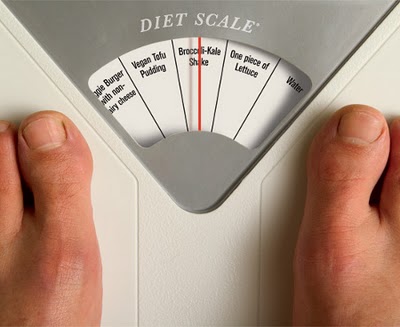The State of Evidence-Based Fitness
I wanted to start my new site with a new post, but as with everything on this site, I get most of my blogging ideas from other people. I got the idea to write this entry from The Oatmeal’s “State of the Web”. Unfortunately, I have the drawing ability of Matthew Inman’s dog (this is debateable as I’m just surmising that his dog can’t draw very well). So you just get text with no nifty comic. 🙁 Read More...
Screwed if you do, screwed if you don’t: People don’t want to read what they don’t want to hear

This WOULD be a catastrophe. This week, I was asked to write a commentary for Fitocracy on what has now become known as the “Red Meat Will Kill You” Study. The fallout in the blogosphere has been pretty dramatic (and by dramatic, I mean drama-filled and theatrical). There have been a few well-written, thoughtful commentaries, but by far, the bulk of criticism has been the general “correlation, not causation” crowd. While I think this is, by and large, a HYUGE step forward in general research literacy, it also makes me wonder if it’s just another sign of polarized, blinded thinking.
There is a fundamental difficulty with measuring long-term outcomes that are distantly removed from single-point events, and continuous repeated exposures. The three mainstream ways to get at the question of, “Does X make you live longer/shorter?” are: Read More...
Beta-alanine: The meta-analysis – 18 trials, still a marginal effect
 I’ve always thought a meta-analysis on beta-alanine was a good idea. So many of the trials have been underpowered, that it felt like weren’t getting anywhere fast. I wanted to be the one to do it, but life circumstances have kept me from focusing on much other than my main career. So it was a pleasant surprise to see that someone else had the same idea.
I’ve always thought a meta-analysis on beta-alanine was a good idea. So many of the trials have been underpowered, that it felt like weren’t getting anywhere fast. I wanted to be the one to do it, but life circumstances have kept me from focusing on much other than my main career. So it was a pleasant surprise to see that someone else had the same idea.
With just 11 weeks left before my exams though, I’m going to keep this blog entry brief. Read More...
Toe-ing the line: What I think about this whole shoe thing
 Oldest discovered leather shoe: 5500 years old
Oldest discovered leather shoe: 5500 years old
I’ve had a few emails asking me to review some of the literature on the new shoe trend. Every company is jumping on the bandwagon to create their version of the Vibram five TOE shoes (sorry, I’m going to be a hand and wrist sub-specialist. Toes are NOT fingers). It’s a little reminiscent of the “body-toning” shoe thing, without all of the wildly outrageous claims, and a trend that I think will live long enough to warrant weighing in on. Most studies to date have really focused on how the shoes alter foot and gait biomechanics. I would argue that most of the claims on the Vibram website are still largely unsubstantiated or just what I call “motherhood statements”, like: “Eating your greens is good for you,” and “Puting on your jacket when it’s cold outside is good for you.” (basically, statements that don’t really have any clout one way or another, but just make you feel better.) Read More...
What will your legacy be?

There are a lots of things we take for granted. In medicine, this is highlighted every day. It’s not just walking or the ability to do things, but also even basic life functions like eating, talking, and breathing; and some cases, just appearing “normal”. There are days when I’m just happy my patient has a regular heart beat–I’m not even shooting for independent breathing or even independent blood pressure.
The reality is that if you’re reading this, and any part of this blog, you’re fairly healthy, mobile, and possessed of your mental faculties enough to read. You have the ability to enact change in your life. If you’re sitting on the fence, you’re choosing to sit there. Read More...
Restriction: It’s not just for calories
 I’m sitting in the Newark airport and having a sandwich at the Earl of Sandwich (it’s the only place I can sit down here, it seems). There was a sign as I came up the ramp for “PI” stating that “He’s a child isn’t a diagnosis”, implying that your child’s cold could be a sign of “PI”. As I’m sitting here eating this club sandwich, there’s another sign outside the restaurant also for “PI” or “Primary Immunodeficiency”.
I’m sitting in the Newark airport and having a sandwich at the Earl of Sandwich (it’s the only place I can sit down here, it seems). There was a sign as I came up the ramp for “PI” stating that “He’s a child isn’t a diagnosis”, implying that your child’s cold could be a sign of “PI”. As I’m sitting here eating this club sandwich, there’s another sign outside the restaurant also for “PI” or “Primary Immunodeficiency”.
Primary immunodeficiency is a condition that affects (at best estimate) about 1 in 100 000 births. There are at least 5000 people that see that sign every day. Of those 5000 people, a much lower number of them will have children and even lower still, the number of those individuals who have a child less than 1 year old. In 20 days (almost a month), that sign would be applicable to a single individual if they were all infants under the age of 1. How many days would it take to pick up one case of PI? Probably more than 6 months to a year. Important? Yes. Because PI or SCID (Severe combined immunodeficiency) can result in DEATH before the age of one year if untreated. Read More...
Flukes–more than fish.
 In January this year, I was in Cancun at a conference (I know, life is harsh). We were traveling from the hotel to the conference and my friend David gave me half a peso back in change because I had lent him too much for bus fare. I said flippantly that he could keep the “half-cent”. He pointed out to me that half a peso was more than half a cent, and was, in fact, 5 cents, or a nickel. I said it was barely more, and he rebutted that it was TEN times more. It was then that I realized this was a very good illustrative example of how a statistically meaningful difference still doesn’t translate into buying a pack of gum.
In January this year, I was in Cancun at a conference (I know, life is harsh). We were traveling from the hotel to the conference and my friend David gave me half a peso back in change because I had lent him too much for bus fare. I said flippantly that he could keep the “half-cent”. He pointed out to me that half a peso was more than half a cent, and was, in fact, 5 cents, or a nickel. I said it was barely more, and he rebutted that it was TEN times more. It was then that I realized this was a very good illustrative example of how a statistically meaningful difference still doesn’t translate into buying a pack of gum.
Most of the studies I review for this site fall into two categories: Read More...
Anecdotal Evidence-Based Fitness
At some point in every fitness-writer/blogger’s lifespan, there comes a point where the rubber has to meet the road. We write about fitness and nutrition and body-image, but I’m sure there are many bloggers who can (and I apologize for the use of two cliches in two sentences) talk the talk, but can’t, don’t or won’t walk the walk.
And at some point in every fitness-writer/blogger’s lifespan, there has to be come form of accountability for what he or she writes. A proponent of supplement X should probably be using supplement X and not just writing in favour of it to get paid if they really think it works. A writer who believes in workout A enough to rave about it should probably be able to show that it works at least for themselves. It’s of little value to say, “X totally works and everyone should be using X, but I don’t.” Read More...
The Information Diet
 The New Year season is full of resolutions to diet for weight loss. It’s also one of the most fruitful seasons for merchants who produce weight-loss products to add to their bottom line. They’re easy to find and getting more and more clever with each passing year. They’re on Google Ads, banner ads, Facebook, Twitter, youTube, and infiltrate virtually every other on-line media you use on a daily basis.
The New Year season is full of resolutions to diet for weight loss. It’s also one of the most fruitful seasons for merchants who produce weight-loss products to add to their bottom line. They’re easy to find and getting more and more clever with each passing year. They’re on Google Ads, banner ads, Facebook, Twitter, youTube, and infiltrate virtually every other on-line media you use on a daily basis.
This easily leads to information overload, as well as fear-based marketing: How do you choose from all of the products available? How do you sift through the inundating assault of those massively lengthy webpages that have PARAGRAPHS of text and testimonials? And worse yet, how do you know that one of those products isn’t better than the one you’re going to buy? Read More...
Defending yourself against decision overload
 It’s 2011, and a new year for the ongoing onslaught of infomercials, internet promises and magazine gimmicks competing for your attention.
It’s 2011, and a new year for the ongoing onslaught of infomercials, internet promises and magazine gimmicks competing for your attention.
A friend of mine once told me, “The most expensive clothes you’ll ever buy are the ones you never wear.” The same goes for diet programs, online e-books, and new (or just re-branded) products. Most people don’t buy new clothes thinking they’ll never wear them. Likewise, most people don’t buy new fitness products thinking they’ll never use them. Read More...


